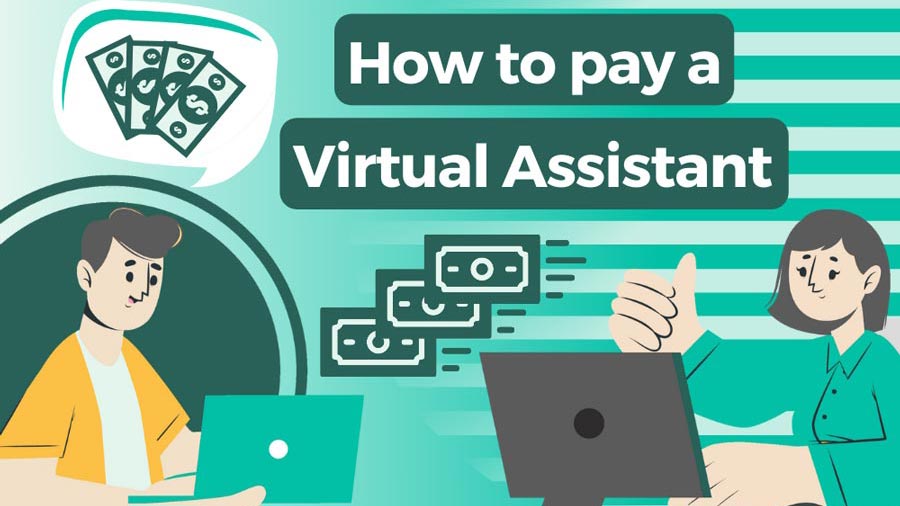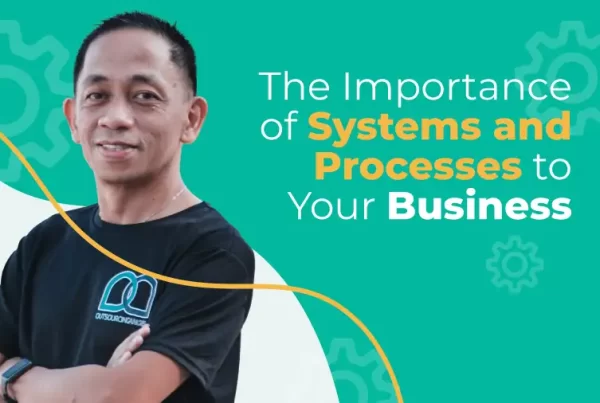
If you’re planning to hire a virtual assistant, you’ll need to set a regular payment schedule. But how do you pay virtual assistant services in Australia? And much do these services cost? 🤔
To learn all about the steps and tools you’ll need, keep reading this guide.

How to pay for Virtual Assistant Services in Australia
Here are the steps you should take:
1. Decide on your work arrangement
The first step is to determine whether your VA will be full-time, part-time, or project-based.
This will help you decide the administrative parts of your payment workflow. It will also help you determine your ongoing costs for the foreseeable future.
There are generally three types of work arrangements with virtual assistants:
- Full-time: In a full-time arrangement, you’re getting someone to work as part of your internally managed teams 5 days per week (an average of 40 hours per week).
- Part-time: These arrangements work well when you don’t need someone to take on a full load just yet. In this scenario, your virtual assistant is only working with you 1-4 days per week (an average of 20 hours per week).
- Per project or per output: If you need a VA to help with temporary or ad-hoc tasks, you can also get someone to work on a per project or per output basis. This means you pay them either per hour or per output (i.e. words written, graphics created, videos produced, etc).
In per project outputs, it’s always better to pay the full amount after the work has been delivered to avoid any financial mishaps.
Other virtual assistants may also request a small deposit before starting the project, especially for specialised roles such as web development, real estate or video/animation production.
2. Decide on the payment schedule
After deciding on a work arrangement, choose a payment schedule.
Common payment schedules in business operations include monthly, bi-monthly, or per task completion:
- Monthly or Bi-monthly: Most companies follow a monthly or bi-monthly payout schedule when dealing with full-time and part-time virtual assistants.
We prefer a bi-monthly payout schedule at Outsourcing Angel. For us, it’s a good balance between the longer wait time of a monthly schedule and the too tedious admin arrangements of a weekly schedule. - After task completion: Per project virtual assistants can be paid immediately after the work has been completed. They can also be paid 50% at the start of the project and then 50% after completion (percentages may vary as per your agreement with a VA).
Virtual assistant cost: Should I pay hourly or a fixed amount per month?
Here are the pros and cons of the two payment terms:
Paying your Virtual Assistant per hour
Pros
Cons
Paying your Virtual Assistant on a fixed salary basis
Pros
Cons
Choose whichever route works better for you.
Remember to ask your virtual assistant’s input. There is no one-size fits all solution, so you and your VA should come to an agreement that suits both of you.
🔥 A hot tip from our managed teams: Do your best to avoid any delays on payments. Being late with payments can breed a level of dissatisfaction or distrust that might lead to higher turnover rates.
Being religious about paying on time will lead to happier and more motivated remote talent who will love and treat your business operations as their own.
3. Choose a payment tool to use
The next thing to consider is the payment tool you’ll use to transfer money.
When selecting a payment tool, here are some tools you can choose from:
PayPal is one of the first and most popular payment transfer tools for many virtual businesses around the globe.
They’re established, trusted and credible. However, they can be known to take out bigger fees than other services.
PayPal Fees
International USD Payout (mass payment to multiple VAs): 2% of total transaction amount (not to exceed 20 USD maximum fee cap)
International AUD Payout is also 2% of the transaction amount (maximum fee cap is 60 AUD)
Another popular payment sending service is Payoneer.
One of the unique things about this service is that it also allows virtual assistants to have physical cards made so they can withdraw money from their Payoneer account without it going through a bank, which can eliminate certain fees.
Payoneer Fees
3% credit card international fee
1% ACH bank debit fee (US only)
Remitly was originally a service meant for sending personal remittances, but some business operations also use Remitly to send money to virtual assistants who work overseas.
Remitly Fees
$1.99 fee for bank or debit card transfer (USD to PHP)
$4.99 fee for cash pick up (AUD to PHP)
Xoom is another service that business owners use. It has been bought by PayPal, and also allows virtual assistants to receive their money through a remittance center.
This is a good solution for any virtual assistant who might not have a bank account.
Xoom Fees
- $0 transfer fees for USD bank/PayPal balance to PHP bank, mobile wallet, or card deposit
$4.99 to $5.99 USD fee for cash pickup option - One limitation is that their debit/credit card method doesn’t support AUD currency (only USD, CAD, EUR, and GBP)
How we pay our Filipino Virtual Assistants
At Outsourcing Angel, we use the following tools to pay our virtual assistants and managed teams:
Our go-to money transfer service is a company called Wise (previously known as TransferWise). We’ve used it for many years and here’s why:
- Same day clearing: Ideal for fast and reliable payments
- Lower fees: To send money in USD to PHP, you pay a flat fee of 7.43 USD + 0.62% of the amount that’s converted (for AUD to PHP, the flat fee is 1.77 AUD + 0.65% of the amount that’s converted)
- Reliable customer support: Includes chat support on weekdays with super helpful staff that always get the issue resolved
- Fair exchange rate: Wise converts your money at the ‘inter-bank’ rate instead of the marked-up rate, so you can save big time.
Airwallex is another tool we use to send payment to our Filipino VAs. They also have a very responsive back-end support in case of a rare error in payment transactions.
- Fair rate: 1.0% above interbank exchange rate (AUD/USD to PHP)
- Bills payment option available: Free international bills payment within your Airwallex account
- SWIFT transactions: 15-25 USD for SWIFT transfers (10-30 in AUD)
4. Use a time-tracking tool with your virtual assistant
Next, you’ll need to set up a time-tracking tool to help your VA stay accountable.
Teams—whether virtual or in-person—have used time trackers, bundy clocks and even biometric scanners to help monitor output and performance.
Here are some tools that help you track your virtual assistant’s output remotely:
Time Doctor: This is a robust tracking tool that has features like Internet Connectivity Report, Activity Summaries, and Optional Screenshots. Plans start at USD 5.9 a month.
Hubstaff: Owned by marketing tech company Hubspot, Hubstaff is both a time tracking tool, project management tool, and a workforce analytics tool. Starts at $4.99 per user per month for two users, but it also has a free 14-day trial.
Clockify: This is another popular time tracking tool with reporting and management features that costs $3.99 a month and up.
How we track Virtual Assistant work hours
Our preferred tracking app is Jibble.
Here are some of the reasons why we love it:
- Easy to use: The app’s user interface is great, which allows both our internal admin and our virtual assistants to use the system without hassle.
- Great data analytics and reporting: This function gives us a better glimpse at what activities take the most time and which areas we could improve.
- Platform integrations: Jibble has a handy integration with Slack, Google Calendar, Gmail, and Notion—these are all tools we use internally for our business operations.
So—there you have it.
With all the steps and tools we’ve provided, you’re now more than ready to hire a virtual assistant. You can now start working and paying them seamlessly!
How much to pay a Virtual Assistant?
You must also decide how much to pay your VA.
Virtual assistant services can cost around AUD $910/month up to more than AUD $1,300/month (roughly USD $600-$850/month or PHP 35,000-PHP 50,000/month). This figure can even be higher depending on specialised skills like real estate and the output your VA can deliver.
While it’s important to keep your costs low, it’s even more important to keep your remote talent motivated with living wages that help them provide for their families, despite the rising costs and inflation.
There are many factors that can vary the rate of a virtual assistant in the Philippines— especially if they upskill enough to take on more tasks than required of them.
Here are the three main things to consider:
- Work arrangement: How many hours per week is your virtual assistant expected to be online?
- Method of outsourcing: You can either hire a virtual assistant through an outsourcing company or hire them directly. Hiring directly might include additional costs such as health insurance, software/tools, taxes, and more.
Hiring through an outsourcing company typically covers these costs. At Outsourcing Angel, we even offer free replacement guarantees, bonuses for your VA, mentorship and volunteer opportunities, and more. - Level of skills and experience: If you require a virtual assistant with technical or specialised skills—such as real estate—their salary will be higher than that of an administrative or executive role.
👉 Related: What can Virtual Assistants do?
Landing on a fair pay rate for your virtual assistant may feel difficult, but a balance does exist. We know from a decade of experience that business owners can land on that balance! 💯
Virtual assistant costs in addition to salary
Have you ever heard of the phrase “You get what you pay for?”
That’s also the case for virtual assistant services.
On top of their monthly salary, you also have to consider additional costs such as:
- Health insurance: Providing financial support for necessary medical consults, checkups and procedures ensures your VA’s continued health, wellness, and capacity to work with you.
- Training and Workshops: This helps your VA upskill, along with the changing needs of your business operations. At Outsourcing Angel, we offer regular training to our VAs.
- Perks and Bonuses: We reward our VAs with referral bonuses, performance bonuses, and more. You might also want to consider a reward points system with your VA in order to encourage them in the same way.

Our 2023 annual company trip. Our Australian team, Filipino admin, and virtual assistants got together on November 2023 in Batangas for our annual company trip.
- Community and Mentorship: We organise monthly in-person meet-ups and mentorship programs to support our VAs both professionally and personally.
- Work Milestone Recognition: When your virtual assistant celebrates a milestone such as a birthday or anniversary, consider celebrating with them by sending out gifts or a bonus to foster loyalty.
- Annual company trips: You can also include your VA in any of your existing company trips. To bring our Aussie and Pinoy Teams together, we organise annual company trips where we can strategise in person, get to know each other better and relax!
- Charity and Volunteer opportunities: This is an optional cost, but you can also give your VAs the opportunity to do rewarding and hands-on volunteer work.
We encourage you to provide as much as you can to your VA without forgetting to pay yourself first.
If this presents a challenge for you, outsourcing to a trusted company can help you cover these additional virtual assistant costs.
Consider your payment, management, and more
When you pay fairly and on time, provide the right tools, and acknowledge their contributions, you create an environment where your VA feels valued and motivated to go above and beyond for your business.
In the long run, this approach leads to a productive, long-term partnership that benefits both sides.






































































































































































